You might think that parking lots are simple to construct by laying some asphalt or concrete and painting some stripes. This is not the case.
There are nearly half a dozen (at least) different roading materials that can be used to construct roads and parking lots. Factors such as climate, size, and functionality can determine what material will work best for a new parking lot.
Today we’ll define and compare some of the most common roading materials used today for parking lot construction—which should help you plan your next project. You might be surprised by what you learn!
What Does a Typical Parking Lot Construction Look Like?
A lot goes into constructing a parking lot beyond just laying the concrete or asphalt. Parking lots also require additional details to help maintain the lot and uphold its integrity, such as:
- Curbs
- Gutters
- Drains
- Bollards (concrete posts)
It’s also vital to install a parking lot in a way that helps direct the flow of traffic, so a business doesn’t deal with a bunch of fender benders in the parking lot because people don’t know where to go.
The standard steps of parking lot construction look something like this:
Step 1: Permits and Prep Work
The city will require a permit to construct a new parking lot. This is to make sure the building and surrounding areas are safe for construction workers and people who want to use that area once it’s complete.
Prep work could include:
- Measuring the area
- Placing markers where the lot will be
- Checking for standing water or other uneven areas
- Planning the project timeline

Step 2: Milling of the Existing Lot (If Necessary)
If a parking lot is replacing an existing one, the old concrete or materials will need to be busted up and removed before beginning. Laying a new lot on top of an existing one can cause cracks, bumps, and other issues down the road. Milling provides a solid, flat layer to build up the new parking lot.
Step 3: Setting the Base Layer
Asphalt is a heavy material, and laying it on top of a poor base layer can be a bad idea. The construction team should level out and grade the entire surface of the new lot to prepare for the new materials.
Step 4: Installing the Roading Materials
This is the part where things get interesting. Once the base layer is complete, construction workers can begin setting up or pouring the roading materials depending on what’s used for the new parking lot. This can be one of the more tedious parts of the project as the materials must be poured evenly—so the machinery and crew may have to work slowly to ensure it’s of good quality.
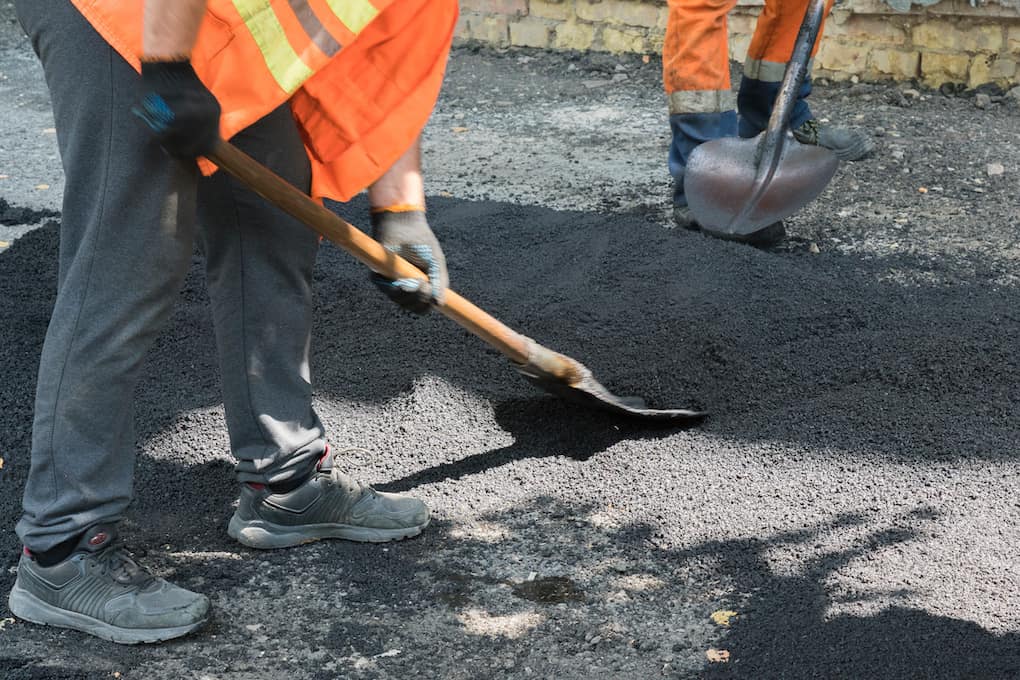
Step 5: Rolling the Materials to Compact
Large rollers then drive over the pavement to flatten it out, and this is when the project will finally begin to resemble a parking lot.
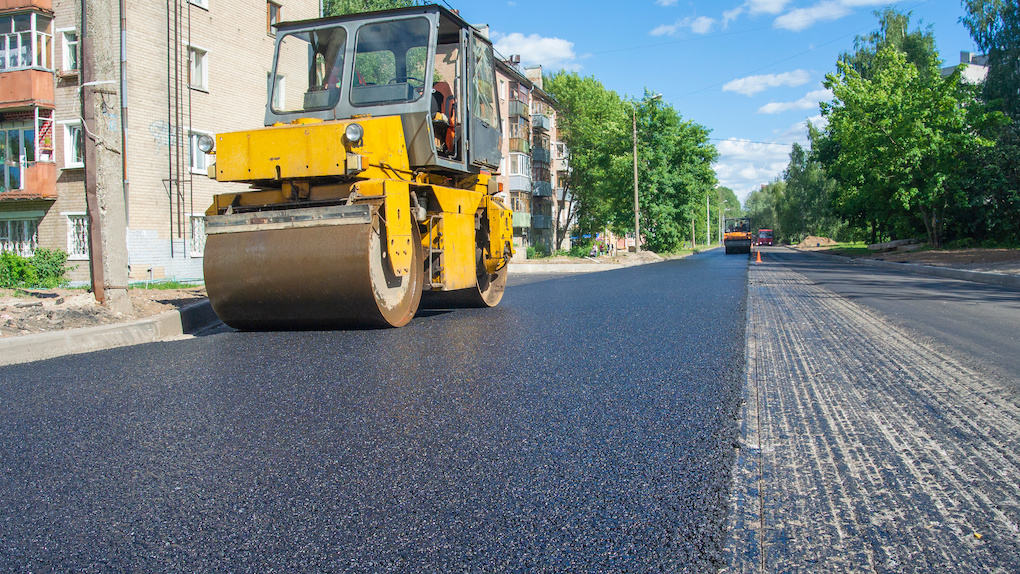
Step 6: Marking Lines and Parking Spaces
Once the materials have been rolled flat and evenly, the crews can mark and paint parking spots, build up curbs and gutters, and ensure proper drainage. This will be the last step to finalize the parking lot and when quality control can be done.
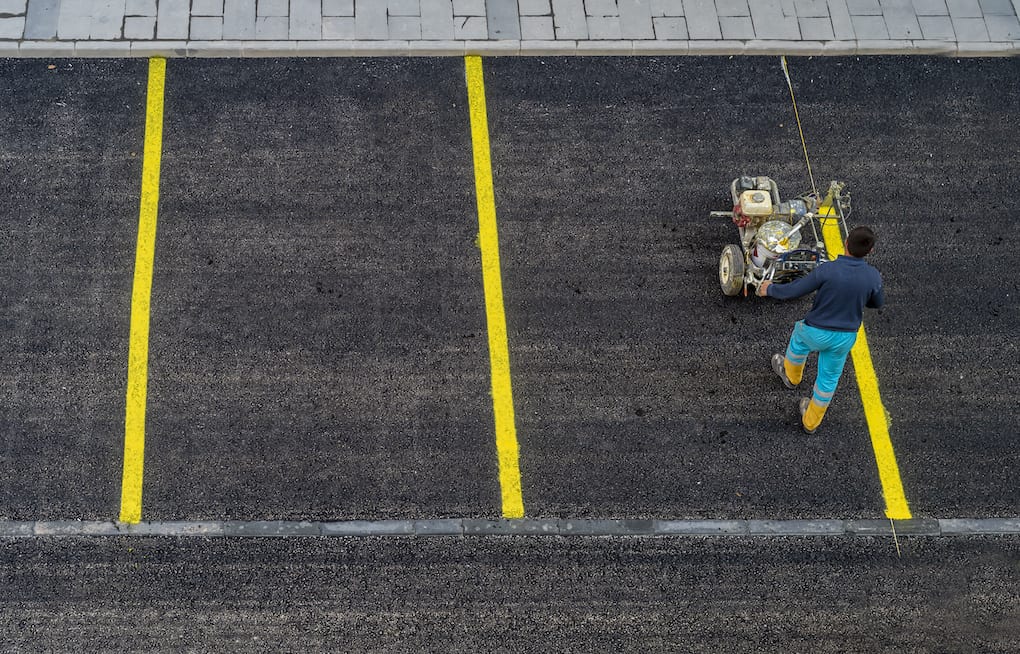
The Best Roading Materials to Build a Parking Lot
Asphalt, concrete, and gravel continue to be the most commonly used materials for parking lots, but you may also see soil, aggregate, or composite pavement used as well. We’ll go through each roading material to determine which is best for budget, climate, and overall timeline of a parking lot construction.
1. Asphalt & Bitumen
Two of the most common materials used for constructing parking lots and roads are asphalt and Bitumen. They’re the most popular for many reasons, and they offer a lot of benefits to both the user and the installer. If you’re installing a parking lot for your business or even a driveway for your home, then these two materials are likely on the top of the list. Here’s what to expect:
Pros:
- Flexibility
- Affordability
- Strong through winters
- Quick installation
- DIY repairs
Cons:
- Limited design options
- Unfinished edges
- Overheating
- Lifespan
- Maintenance
To every advantage, there’s a disadvantage, but if you want the best bang for your buck, then asphalt is a common option that fits the needs of many people.
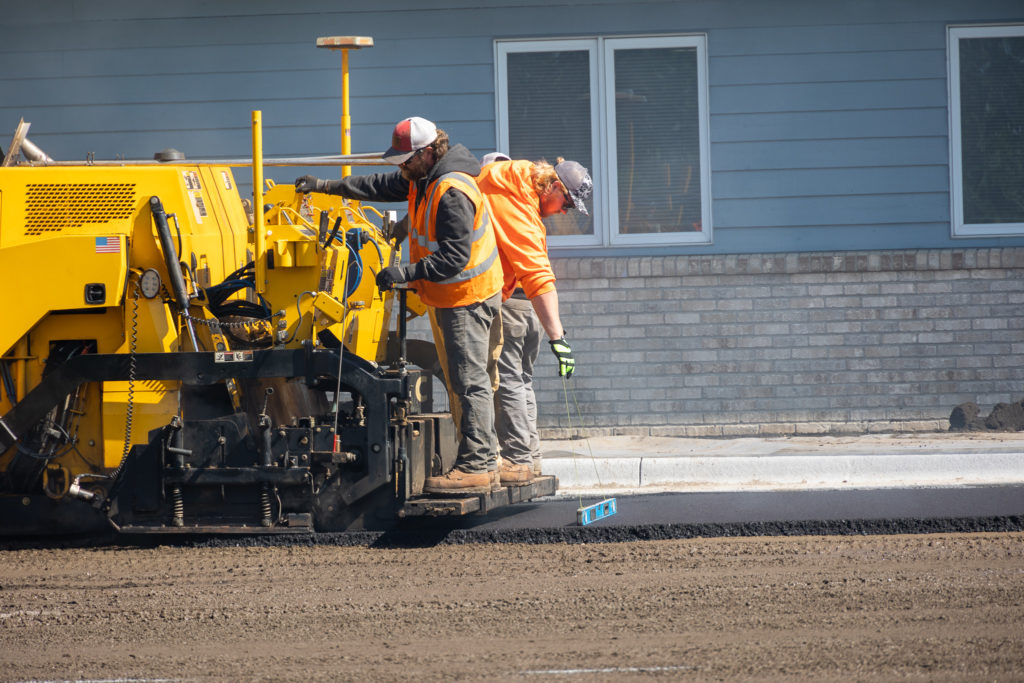
2. Concrete
Concrete is the premium roading material. It’s used in extremely high traffic areas because it’s durable, lasts for nearly 40 years, and looks great. It can be very expensive for those installing a parking lot, but it’s an investment. You might consider using concrete in some of the higher traffic areas if you’re not looking to install it throughout the entire parking lot.
Pros:
- Durable and sturdy
- Can withstand high temperatures and extreme conditions
- It can be molded and made decorative
- Requires little maintenance
Cons:
- Cheap concrete won’t last as long as it should
- Requires re-enforcement to keep from cracking
- Difficult to repair
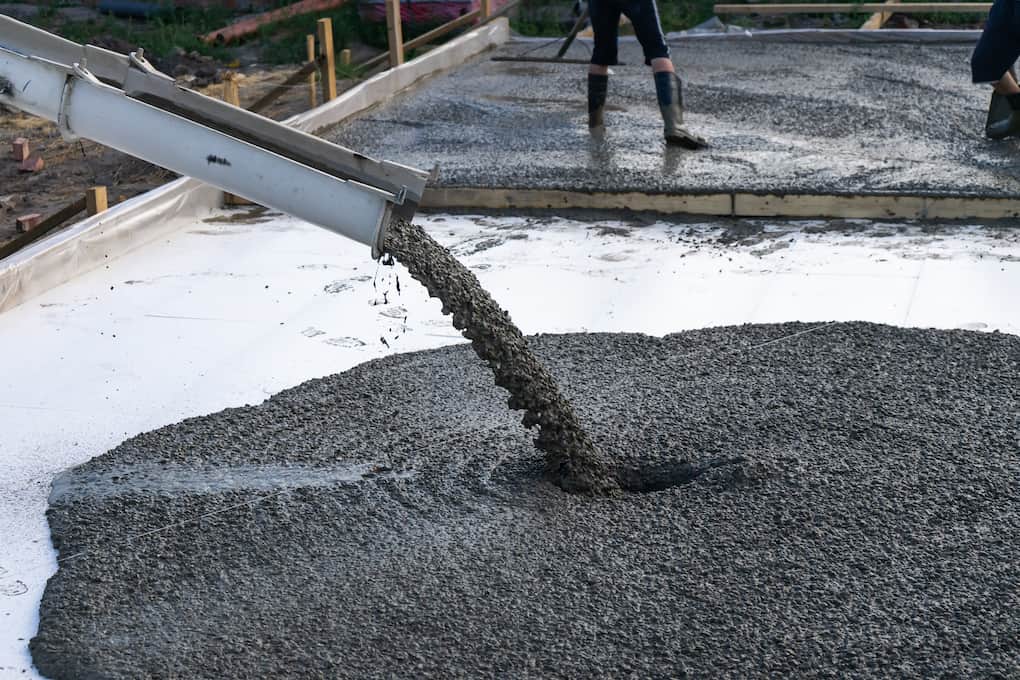
3. Gravel
Gravel is a much cheaper and almost maintenance-free material that fits the needs of most driveways and parking lots but does have some drawbacks. The low cost and easy install are the two biggest draws, but they are also great solutions if you’re looking for a temporary fix before you’re able to afford an asphalt or concrete driveway.
Pros:
- Can be a DIY project
- Very affordable
- Ready to drive on
- No maintenance
- Lasts forever
Cons:
- Dusty and dirty
- Can develop potholes
- May need material added over time
4. Soil
Soil might be a solution for your parking lot if you need a temporary fix or you’re not ready to determine how large the driveway and parking lot will be yet. The type of soil you use is very important as some soils will degrade or become too spongy when wet and cause vehicles to become stuck.
Pros:
- Good temporary fix
- Cost-effective
Cons:
- Not a long-term solution
- Regular maintenance and leveling required

5. Aggregate
As a material, aggregate isn’t used as the primary roading material in any case. But, it is used to prepare the surface of a driveway or parking lot so that cement or asphalt can be poured.
Aggregate is affordable and helps to reinforce the surface and provide a longer-lasting parking lot. If aggregate materials aren’t used, the lot could experience cracking and eventually need major repairs.
6. Composite Pavement
Composite pavement isn’t a common roading material, but it’s sometimes used for driveways, roadways, and parking lots. The benefits of composite pavement are still under discussion and testing, but they likely will start to be used more and more commonly in the future.
Composite pavement combines concrete and asphalt to create a better surface for driving. Here are some of the benefits of performance.
- More acceptable friction
- Noise reduction
- Improved ride quality
- Reduced splash and road spray

Other Considerations for Your Parking Lot Project
Your parking lot serves both a function and as the first representation of your building as customers approach. Your business is just one part of the decision around what material you should choose for your business. Here are a few other variables:
Cost of Materials
The cost of materials is always going to make a big impact on the material you choose. Here are some of the prices that you can expect to pay for the materials we mentioned above.
- Concrete $4-$7 per sqft
- Asphalt $2.5 – $5 per sqft
- Gravel $1-$3 per sqft
Composite materials aren’t often offered, so you’ll need to contact your local construction company to check on the pricing and availability of that material.
Size of the Lot
The size of the lot will impact the cost in huge ways. A larger lot is going to get you a better price per sqft for the material, but the labor costs are going to be slightly higher.
If you have more than one lot that’s close to the other, you might want to get them both resurfaced simultaneously to help save some money. Most companies will give discounts for referrals to businesses that are close by. That way, they can work in the same area for longer and use the extra material on the neighbors.
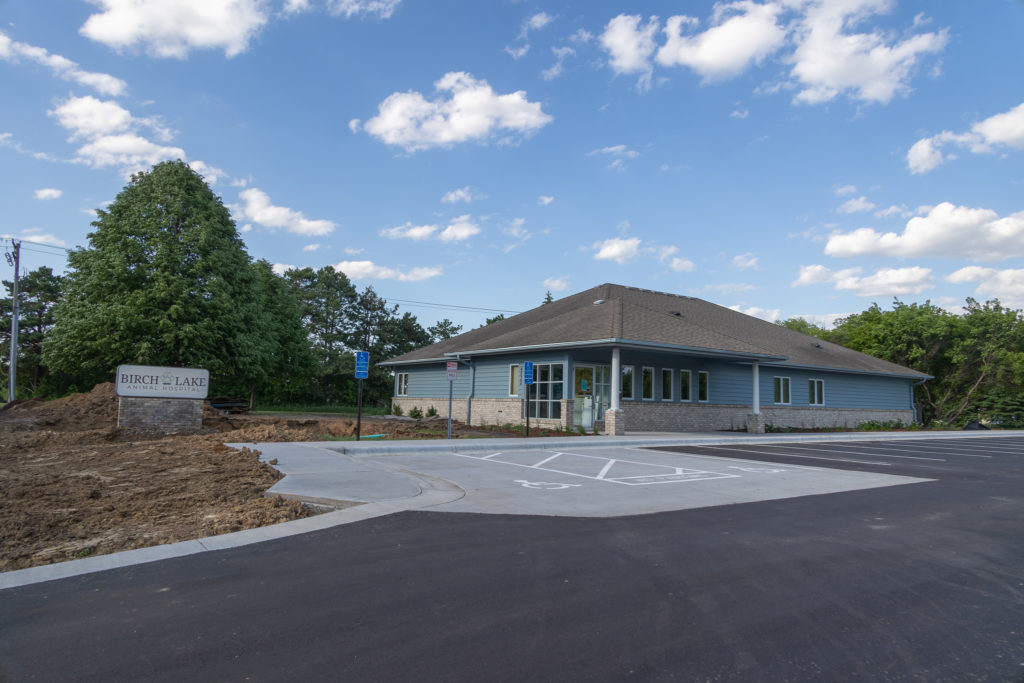
Landscaping or Cart Corrals
If you have a lot of lights, cart corrals, or landscaping throughout the parking lot, it will cost more to complete the project. These obstacles are like roadblocks to your contractor, and they can result in a higher bill.
One way to make it easier for them is to remove as much as you can from the lot and make sure they are able to work as unhindered as possible.
ADA Compliance
ADA (Americans with Disabilities Act) compliance is very important for your business. Your building will not be ADA compliant if your parking lot isn’t ADA compliant. Factors that affect ADA compliance include:
- Handicapped spaces
- Slope of the parking lot
- Parking lot striping
- Distance between spaces
Depending on where you’re located, there may be even more factors that can affect your parking lot. Be sure to check into local regulations and ask your contractor if they’re following the guidelines.
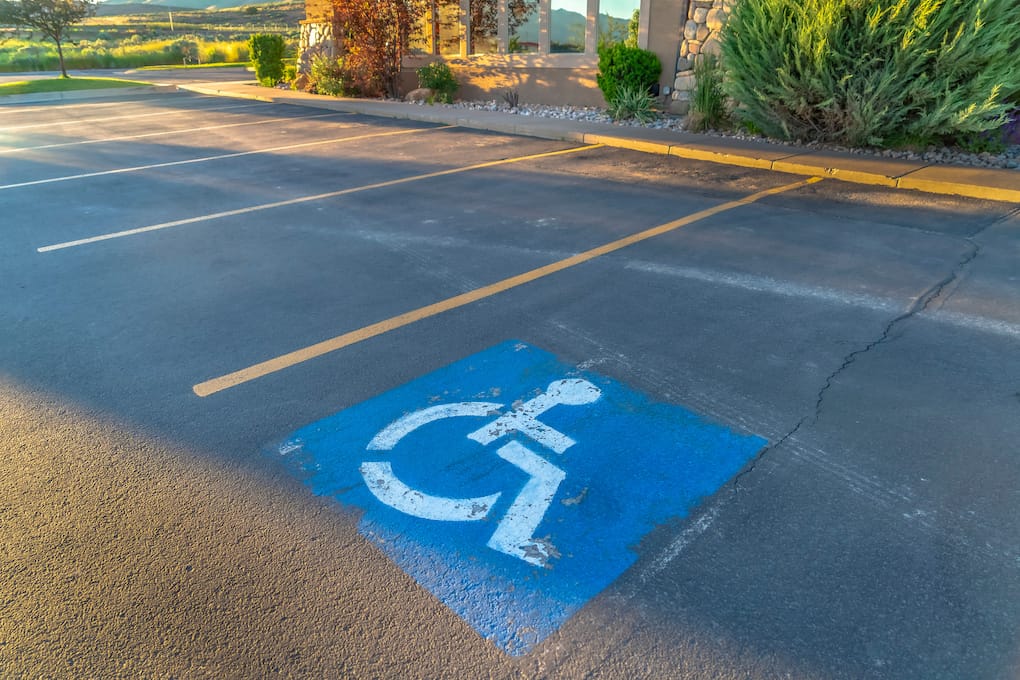
Parking Lot Experts
At Goodmanson we’ve been paving perfection for over 50 years, and we’ve got our parking lot process down to a science. The next time you need a parking lot for your business, be sure to reach out!
We’d love to help you design the parking lot that you need for your business. Whether it be big or small, we’ll always give you our very best.

